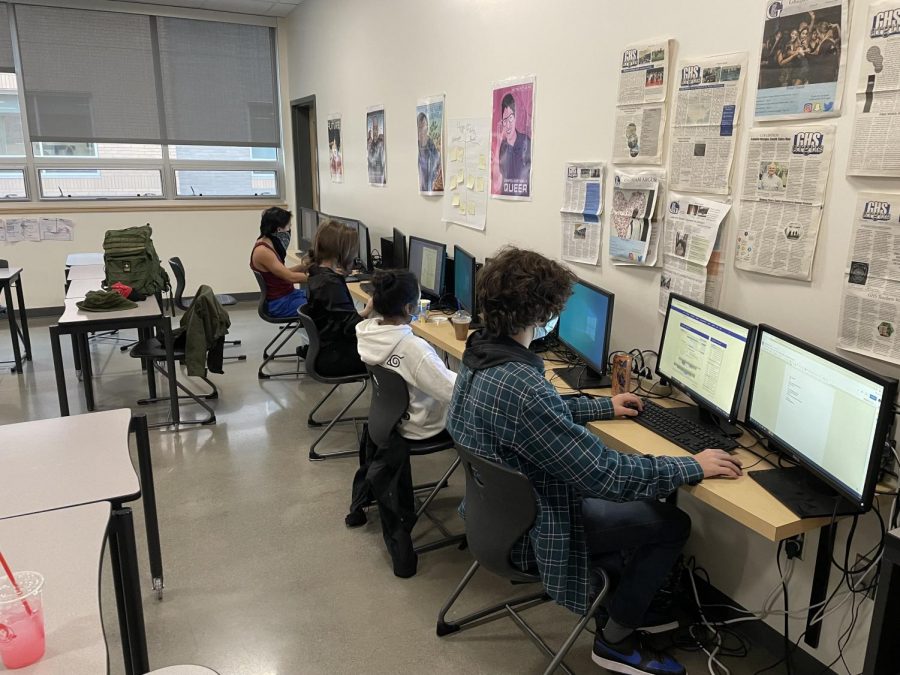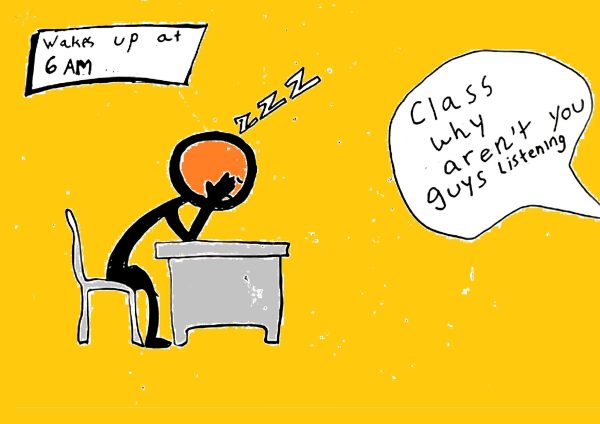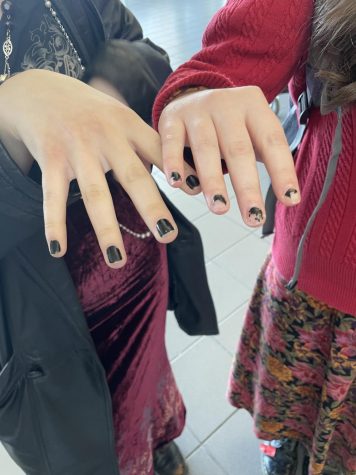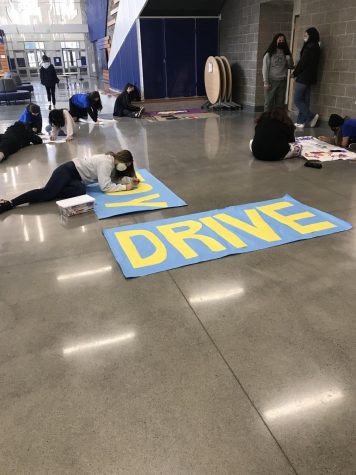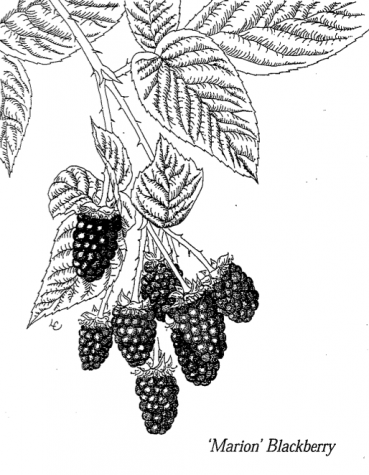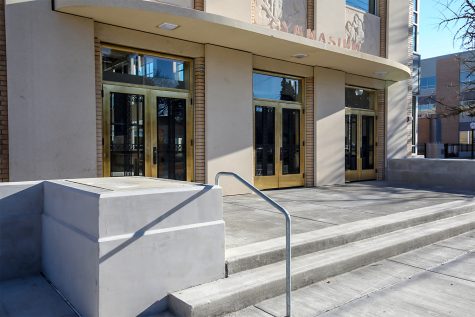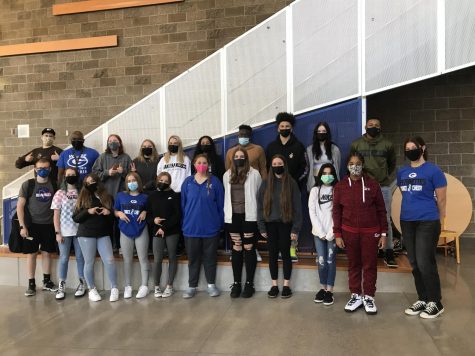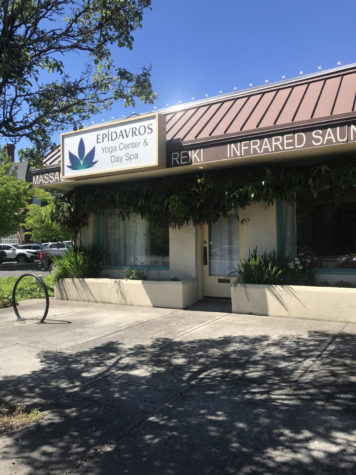Behind the scenes:
The making of GNN and The Argus
The Argus’ crew create the newspaper’s pages using Indesign.
December 18, 2021
It feels like something new is always happening here in Gresham, and it can be hard to stay caught up on the news. Luckily, the GHS news team is here to help. The Argus is the school’s newspaper and operates from room 202 along with the crew behind GNN, the weekly video news segment played during advisory class. A lot of work goes into each issue of The Argus, as well as each episode of GNN.
Starting with the newspaper; some of the most crucial work must be done before the writing process can even begin.
“The first thing we have to do is come up with ideas,” Editor-in-Chief Juliette Ramirez-Torres said. “We have to fill out a pitch form, then we get into a circle and pitch our ideas.” During the pitch, students comment on each other’s ideas for newspaper articles. Then they move on to the next step, as long as their idea is approved by Breanne Carlisle, teacher and advisor for both Newspaper and GNN.
“From there, we find our sources, who we’re going to interview, and then we go do the interviews,” Ramirez-Torres said.
Interviews are best conducted in person, but it is also possible to interview a source over the phone or via email. The writers then incorporate the quotes from their interviews into their article. Then each article has to go through an editing process.
“So we have two editors: editor-in-chief and associate editor, and we also have Mrs. Carlisle who oversees everything,” Ramirez-Torres said. “As for the editors’ job, we have to go through everyone’s stories and make sure everything’s good, like punctuation, grammar, and just overall the flow of the story.”
Writing the story is just half of the work, because each writer has to also design a page of the newspaper using Adobe Indesign.
“Our designs are based on the past mistakes we’ve made. We do try to change it up a bit, whether that’s the logo or the content inside the newspaper. But we generally keep it the same, and we kind of look to bigger newspapers like the New York Times [for inspiration],” Ramirez-Torres said.
There is a style guide that all pages have to follow, which includes guidelines of what fonts to use, the size of the text, and where to place certain elements on the page (like the date and page number). This is done to have a consistent style.
After the pages are designed, it’s off to print, and then to be distributed to classrooms around the school, as well as the newspaper rack outside of room 202.
“Typically it takes about a month, and this particular issue is taking more time because we have Thanksgiving break in the middle. Normally we have a few days to come up with ideas, then we pitch. Next, we have a week to come up with our questions, a week to get those interviews done, a week to write the actual story, a week to edit, and a week for Indesign,” Ramirez-Torres said.
After an issue is published, newspaper students have a few days to relax before beginning their next article. It’s a lot of hard work, but it’s worth it.
Ramirez-Torres said, “I think the most fun part is having the finished product in your hands after doing all that work.”
Creating GNN shares some similarities with the newspaper, and they do interact with each other, but there are some key differences that set them apart.
“Sometimes GNN will do a similar story as the newspaper and I’ll have them collaborate, but generally the main difference is GNN is producing an episode every other week for the student body, or every week depending on what the schedule is,” Carlisle said. “So they’re kind of at different points in the process.”
Carlisle elaborated that the newspaper spends time getting more in depth interviews, while GNN is on a tighter schedule, and spends more time “getting quick sound bites, going out and getting B roll shots, and getting our gopher on the street segments.
First, GNN comes together to come up with segments for an episode, and assign who will do what. Then each student must go find their sources to interview and set a time for filming.
“You think about who would be qualified to be interviewed for each one, [segment] and then preparing for it is a little time consuming, but it’s an important process,” said Carmen Ramseyer, a three year veteran of GNN.
It takes a while to schedule a time and place to interview, and to find a person who will provide good quotes and who has expertise on the topic of the article. Unlike the newspaper, GNN has to do all of their interviews on camera, which can add to the stress of interviewing.
“It’s not too scary because I’m used to it. And I know some people are definitely scared of interviewing, especially their first time. It can be scary to be on camera and worried about what you’re gonna say. But with time and practice, it comes naturally,” Ramseyer said.
After the interviews are done, the recorded footage has to be assembled into a coherent episode.
“We have a main editor, and then sometimes if there’s specific segments someone wants to edit, they can edit them,” Ramseyer said.
After that, the episode is ready to be shown in advisory classes school-wide, and is also posted on the Gopher Nation News Youtube channel. Both GNN and The Argus take a lot of work, but there is a lot to like about the process.
Carlisle said, “I think it’s great if you like to socialize and like talking to people, because you get to do that all the time. I think also if you’re interested in people’s stories, journalism is a place for you, because that’s what it is.”
You can also learn some new skills working throughout the process. For instance, Ramirez-Torres said that she “…learned how to take the lead and work with peers to create a finished product.”
These classes also seem to offer benefits that extend beyond school.
“I’ve learned a lot in GNN – how to be comfortable on camera and use a lot of the gear we’ve had the chance to work with,” said Ramseyer. “ I’ve also learned about the importance of trying to be as impartial as possible when doing interviews and putting together segments. GNN has taught me a lot of valuable things, and I’m thankful for the opportunities it’s given me and how involved it’s allowed me to be in our school community.”
Both GNN and The Argus cover controversial issues from time to time, such as the debate over SRO’s in school, and being impartial is important when covering these topics.
Carlisle said, “That’s kind of our job, to present both sides of the issue, give them [the students] the facts and let people decide how they feel. Which I think is very important, for our community and our student body.”
